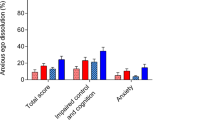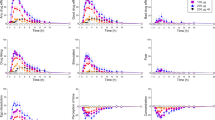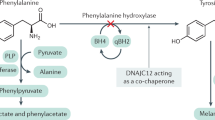Abstract
Angiotensin II is dipsogenic, and vasopressin (ADH) regulates renal water excretion. Together, these hormones govern overall mammalian water balance1,2. The Brattleboro rat with inherited diabetes insipidus (DI) lacks ADH and is therefore a convenient model with which to elucidate mechanisms regulating water metabolism. In the present studies, angiotensin II has also been removed from DI rats by the administration of an inhibitor (captopril, SQ 14225; D-2-methyl-3-mercaptopropanoyl-L-proline) of the enzyme which converts angiotensin I, the relatively inert component of the renin–angiotensin system, to angiotensin II, the biologically active substance3. SQ 14225 reduced the drinking rates, and after 6 days lowered peripheral plasma aldosterone concentrations were associated with hyperkalaemia. We conclude that the polydipsia of diabetes insipidus partly results from elevated plasma renin activities and angiotensin II concentrations seen in this syndrome. Further, the apparent hypoaldosteronism of DI Brattleboro rats reflects differences in both tissue usage of the steroid and adrenocortical sensitivities associated with polyuria, hyperosmolarity and possibly potassium wasting4,5.
This is a preview of subscription content, access via your institution
Access options
Subscribe to this journal
Receive 51 print issues and online access
$199.00 per year
only $3.90 per issue
Buy this article
- Purchase on Springer Link
- Instant access to full article PDF
Prices may be subject to local taxes which are calculated during checkout
Similar content being viewed by others
References
Fitzsimons, J. T. Physiol. Rev. 52, 468–561 (1972).
Laragh, J. H. & Sealey, J. E. in Handbook of Physiology Section 8 (eds Orloff, J. & Berliner, R. W.) 831–908 (American Physiological Society, Washington DC, 1973).
Ondetti, M. A., Rubin, B. & Cushman, D. W. Science 196, 441–444 (1977).
Möhring, B., Möhring, J., Dauda, G. & Haack, D. Am. J. Physiol. 227, 916–920 (1974).
Balment, R. J., Henderson, I. W. & Oliver, J. A. Gen. comp. Endocr. 26, 468–477 (1975).
Balment, R. J., Chester Jones, I., Henderson, I. W. & Oliver, J. A. J. Endocr. 71, 193–217 (1976).
Möhring, J., Möhring, B., Schömig, H., Schömig-Brekner, H. & Haack, D. Am. J. Physiol. 227, 921–926 (1974).
Kenyon, C. J., Mosley, W., Hargreaves, G., Balment, R. J. & Henderson, I. W. J. Steroid Biochem. 9, 337–344 (1978).
Ferguson, R. K., Turini, G. A., Brunner, H. R., Gavras, H. & McKinstry, D. N. Lancet i, 775–778 (1977).
Brunner, H. R. et al. Ann. intern. Med. 90, 19–23 (1979).
Rubin, B. et al. Eur. J. Pharmac. 51, 377–388 (1978).
Bonjour, J-P. & Malvin, R. L. Am. J. Physiol. 218, 1555–1559 (1970).
Davis, J. O. & Freeman, R. H. Physiol. Rev. 56, 1–56 (1976).
Herzheimer, A. & Woodbury, D. M. J. Physiol., Lond. 151, 253–260 (1960).
Kenyon, C. J., Hargreaves, G. & Henderson, I. W. J. Steroid Biochem. 9, 345–348 (1978).
Mann, J. F. E., Rascher, W., Schömig, A. & Dietz, R. Klin. Wschr. 56, Suppl. 1, 67–70 (1978).
Gavras, H. et al., New Engl. J. Med. 298, 991–995 (1978).
Dean, H. G. & Ingham, S. Br. J. Pharmac. 64, 390P (1978).
Author information
Authors and Affiliations
Rights and permissions
About this article
Cite this article
Henderson, I., McKeever, A. & Kenyon, C. Captopril (SQ 14225) depresses drinking and aldosterone in rats lacking vasopressin. Nature 281, 569–570 (1979). https://doi.org/10.1038/281569a0
Received:
Accepted:
Published:
Issue Date:
DOI: https://doi.org/10.1038/281569a0
This article is cited by
-
Renin- and non-renin–mediated antihypertensive actions of converting enzyme inhibitors
Kidney International (1984)
Comments
By submitting a comment you agree to abide by our Terms and Community Guidelines. If you find something abusive or that does not comply with our terms or guidelines please flag it as inappropriate.



